The Life and Works of Professor Mohammad Abdul Jabbar, Chapter Four.
The Professor – Post-1971 Liberation War
In 1984, after four years of retirement, Mr. Mohammad Abdul Jabbar was not happy with a quiet retired life – showing where the young Professor's tenacity originated from – and he returned to BUET to take the role of Dr. Rashid's Chair, as well as re-joining the Department of Mathematics as Professor Emeritus for the next two years.
Whilst the role of Professor was, and still is a prestigious role, being awarded Dr. Rashid's Chair was perhaps more significant. This was awarded in honour and memory of Dr. M. A. Rashid, who was the founding Vice Chancellor of BUET. Dr. M. A. Rashid was also a storied and decorated man, having not only been the founding Vice Chancellor, but was also attained the first-ever doctorate degree in Engineering in, what was at the time, East Bengal. The Dr. Rashid chair is a very prestigious award, the highest state award that the Government of Bangladesh can honour an individual with.
During his return to BUET from 1984, Professor Mohammad Abdul Jabbar completed a number of significant projects to bring more interest in astronomy within Bangladesh.
His first project, shortly after being appointed to Dr. Rashid's Chair, was to create an astronomical Map of the Galaxy. This was created in plate carrée projection, a traditional spherical layout that he then displayed on a sphere, called the Kha-Globe. The Kha-Globe was created to indicate the position of various stars/constellations in the sky, and to ease recognition of some of the more famous or complex constellations, such as the Zodiac Circles. The Professor spent much time working on the Kha-Globe, ensuring that every individual star was drawn in the correct position, with the correct brightness and colours also detailed.
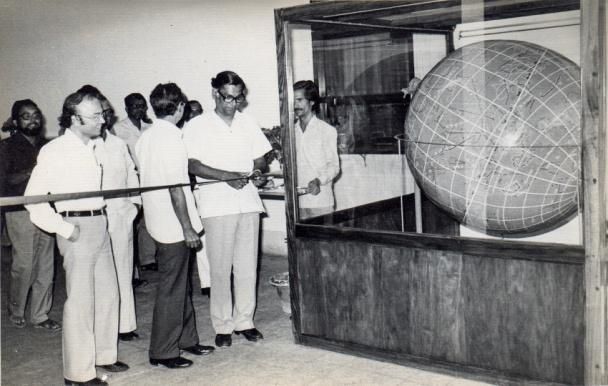
The Kha-Globe being unveiled, in a display cabinet similar to it's current preservation status.
The Kha-Globe, when complete, was a 45-inch sphere with 1,990 stars, 88 celestial diagrams, and the 12 Zodiac Circles all drawn out. The Kha-Globe is preserved and maintained by the Bangladesh Astronomical Assocation. The plate carrée projection that the Professor used in 1984 continues to be used to this day, with NASA releasing star maps in the same format (to be used in projection software on modern computers) every few years.
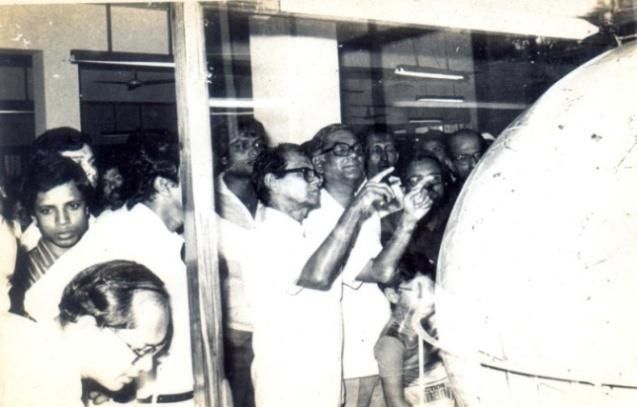
Professor Mohammad Abdul Jabbar (centre) explaining the Kha-Globe.
In 1985, there was a lot of excitement across the world when Halley's Comet reappeared in the sky. A generational comet that appears roughly every 75 years, it's 1910 appearance was before the Professor was born. In 1985, the Professor was 70 years old and his children were adults. The next appearance of the comet is due for 2061, where the Professor's grandchildren will be around the same age as he was when it last appeared.
Back in 1985, the excitement to see a once-in-a-generation comet was also prevalent in Bangladesh. At the time, there were a number of books detailing the various comets that had been recorded – but nothing about how and where to see Halley's Comet. The Professor was asked by many people, both professional and amateur, to help them track the comet and provide all the information they needed – the comet's trjaectory, perihelion, weather conditions, tracking heading, and so on. The Professor was happy to help, and on 28 October 1985, when Halley's Comet was visible over Bangladesh, it was due to the efforts of the Professor tracking and calculating where the comet would appear, and sharing the information with the public.
Whilst working on the Kha-Globe, the Professor was also writing a book. This was published by BUET in 1985, called Biswa O Sowro Jagat (Universe and the Solar System). Biswa O Sowro Jagat was unanimously praised as a very important book in astronomy due to the research and detail that had gone into its publication.
At this point, the young Professor's work was being recognised across multiple countries, with his works more popular in India, than in the newly-formed Bangladesh. Mr. FR Sarkar, General Secretary of Bangladesh Astronomical Society, wrote:
When I was working in Khulna in the early days of my working life, I found the book ‘Khogol Porichoy’ while browsing in the public library there. Author was Mohammad Abdul Jabbar. The name seemed a bit strange to me, at that time, I could not comprehend what ‘Khagol’ meant. However, I started reading the book. I began to read with such delight and eagerness that I did not even notice that it is already evening. In fact, my interest in astronomy grew exponentially after reading the book Khogol Porichoy’.
It is sad but true that Professor Mohammad Abdul Jabbar was better known in India than in Bangladesh. His books were highly esteemed in other side of Bengal. Some amateur astronomers from Bangladesh paid a courtesy call to the director of Birla Planetarium in Kolkata. When the director of the planetarium met them, the first thing he said was "How is Mr Jabbar? I have read all of his books. He writes wonderfully. With a person like Mr. Jabbar, why can you not make a planetarium in Dhaka?" Having such a genius and unique personality like Professor Mohammad Abdul Jabbar, we have not been able to appreciate him, we have not been able to recognize his talent.
(Jabbar Sahib, as I have seen - FR Sarkar, General Secretary, Bangladesh Astronomical Society, Page-26, Mohakash Barta)
Mr. FR Sarkar was not the only professional who had been inspired by the young Professor. Indeed, the Bangladesh Astronomical Society and the Bangladesh Astronomical Association was host to many tributes to the young Professor over the years, which will be covered further in a later chapter.
The Professor – Awards & Recognition
Whilst the Professor had a number of important roles, he maintained an active involvement in the post-graduate studies of BUET students, as a part-time teacher. Education was a very important part of his life, which he imparted on his students (and his family too). This did not go unrecognised, and in 1985 the Government of Bangladesh awared him the একুশে পদক award (Ekushey Padak) - the second-highest civilian award in Bangladesh, administered by the Ministry of Cultural Affairs.
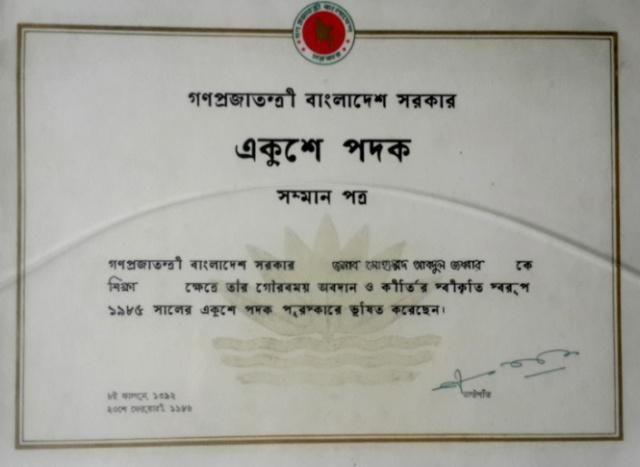
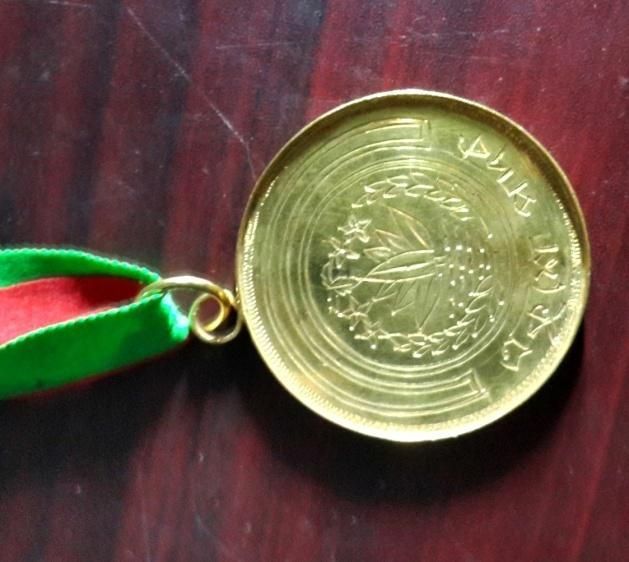
The award (Ekushey Padak) certificate and medal presented to the Professor, preserved by his family.
In 1990, the Professor received the Bruno Padak award from the Bangladesh Astronomical Association, in recognition of his distinguished contributions to astronomy within the country. The Professor was the inaugural recipient of this award, with the namesake being a tribute to a historic (1500s-era) Italian cosmologic theorist called Giordano Bruno.
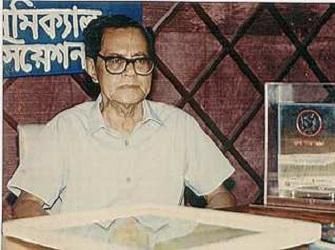
The Professor at the Bruno Padak award ceremony.
The Professor was also recipient of some earlier awards. Dr. Muhammad Qudrat-i-Khuda had been a strong influence on both the Professor and his older brother. In 1980, however, the Professor found himself as the recipient of the Qudrat-i-Khuda Smriti award, which the Professor would have been proud to receive.
In addition, the Professor also received the Bangla Academy Literature Award in 1983, due to his efforts in creating research papers.
Professor Mohammad Abdul Jabbar – Later Personal Life
The Professor married Mrs. Noor Jahan Begum on 8 June 1939 and they shared an incredible love for each other. Their children also loved their mother and father, and as appropriate for historic times, she was a housewife and put all of her love and effort into raising their children. However, Mrs. Noor Jahan Begum was also a skilled littérateur and had written her own books. The most noteworthy was Hariye Jaowa Jagat, which was a children's adventure book, written in Bengali, and based on Sir Arthur Conan Doyle's science fiction book The Lost World and Thakurmar Jhuli's fairytale book Sonar Kathi Rupar Kathi.
In 1979, Mrs. Noor Jahan Begum (the wife of Professor Mohammad Abdul Jabbar) had passed away due to cancer. The young Professor was devastated. In 1986, the young Professor moved to his own house in Malibagh. He named the house in loving memory of his wife – with a motto to honour Mrs. Noor Jahan Begum. He spoke, “I will consider myself blessed if this joy of mind is transmitted to someone else”.
Many visitors and family members were touched by this quote and were directly impacted by the young Professor's positivity, having lost the love of his life.
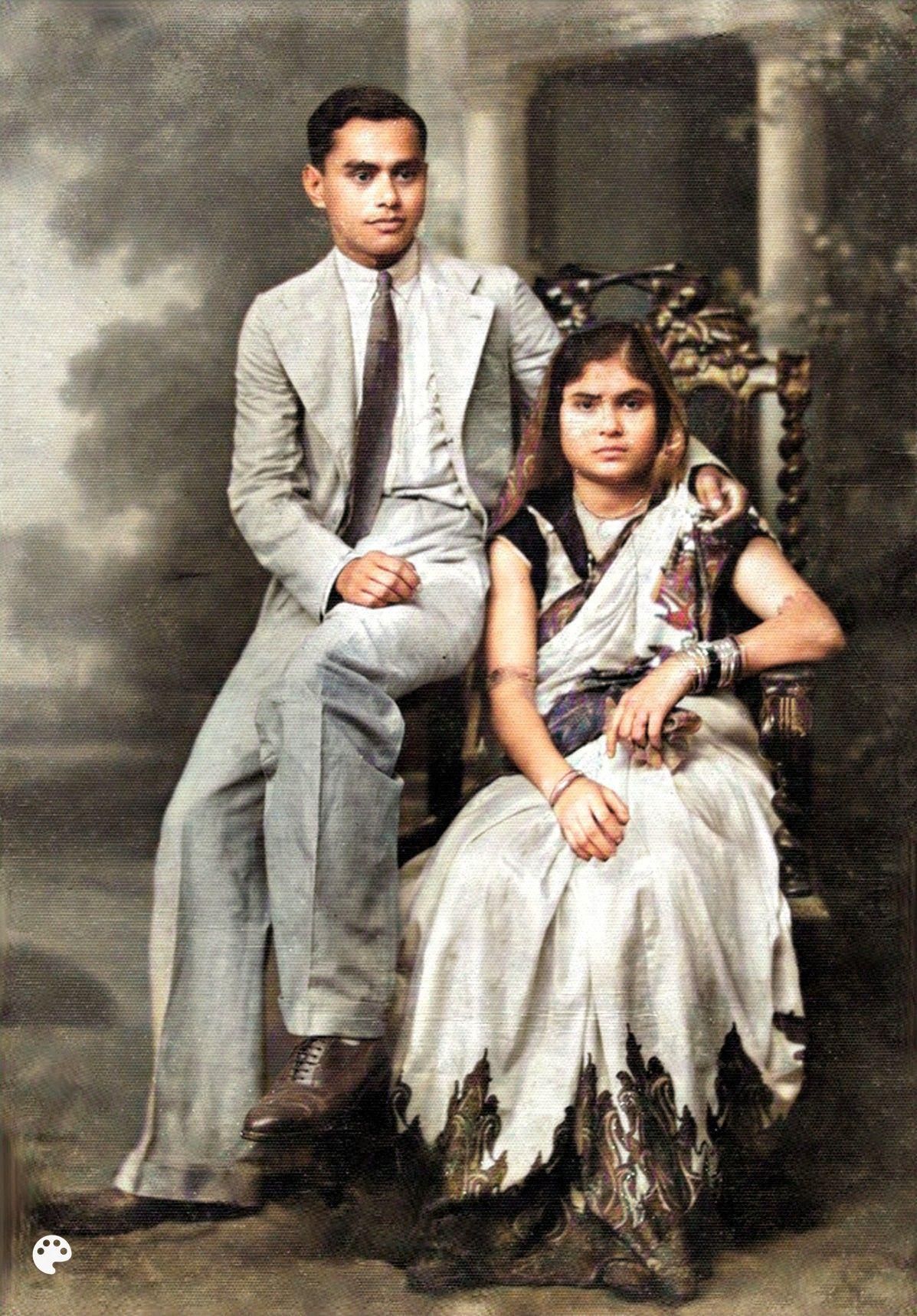
Professor Mohammad Abdul Jabbar and Mrs. Noor Jaham Begum on their first wedding anniversary [restored photo]
The Professor had a very disciplined personal life. Whilst trivial in modern times, he kept a schedule to have a hot shower at the same time every day. His routine lasted 50 years; he took small meals at regular intervals, and would have two pieces of Chapati just before he turned in for the night, every night. His diet was healthy; he mostly ate fruits and green vegetables, and never drank alcohol.
The Professor was also very wise with money, having seen his family work hard to earn it. He never spent anything more than what was necessary; he wore simple cotton clothes, chose to live without luxury items, and loved walking. Whilst he could have used his position to obtain transportation, he instead elected to walk from Motijheel to BUET, and back again every day.